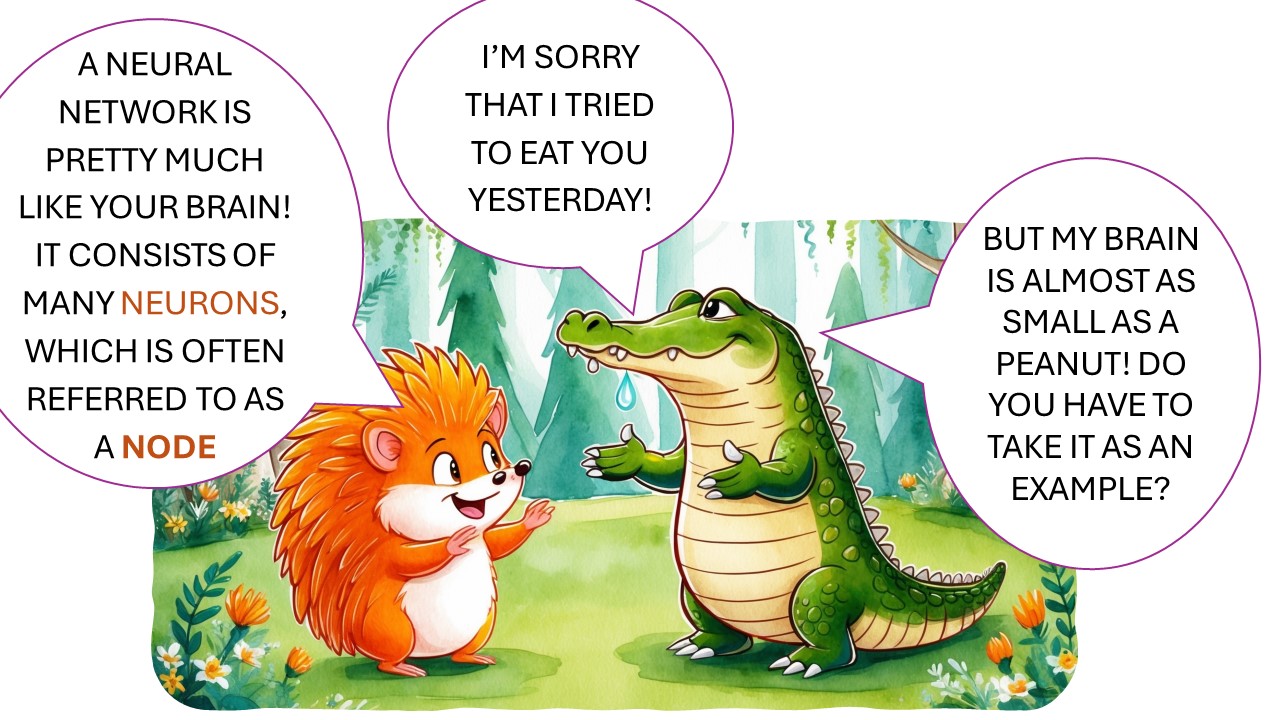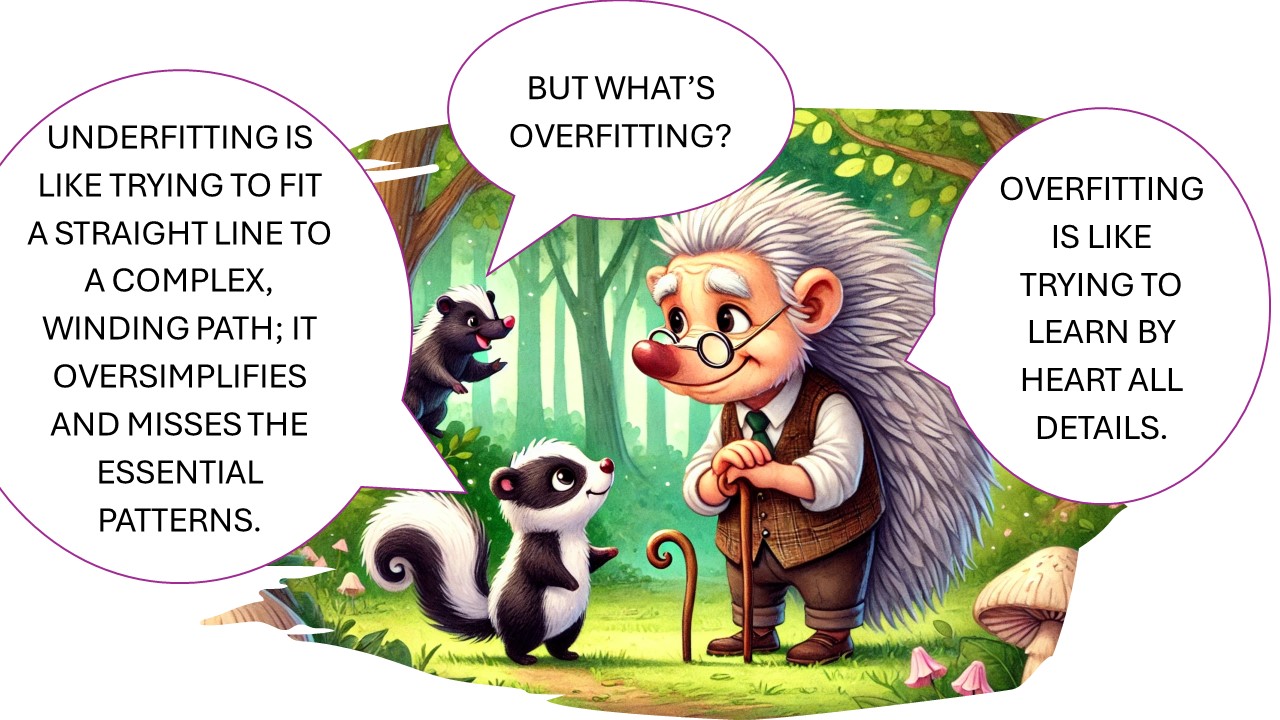The idea of neural networks is inspired by the structure and functioning of a brain, where interconnected neurons process and transmit information through complex networks. Neural networks have various applications, such as:
Generating and telling jokes by learning from a vast database of jokes and adapting humor to different audiences.
Dream Interpreter: AI that analyzes dreams and provides interpretations. ?
Interpreting your pet’s talk: Understand what your pet is talking about based on its motions, behaviors, and sounds. ??
A feedforward neural network, or multilayer perceptron (MLP), is a type of artificial neural network where data flows in one direction through multiple layers of neurons, typically including an input layer, one or more hidden layers, and an output layer, each fully connected to the next:

The input layer in a neural network is the first layer that receives the raw data and passes it to the subsequent layers for processing. The output layer produces the final predictions of the network. So, for the task of classifying whether a smell is the smell of a durian or the smell of a jackfruit, I need only one neuron. This neuron will decide whether the smell is the smell of a durian or not. In general, for a binary classification task, there is only 1 neuron in the output layer to predict if the input sample belongs to class A or not (if it doesn’t belong to class A, it must belong to the remaining class).
For a classification task with (N) classes, the output layer typically has (N) neurons (one for each class). For example, I want to classify walk styles into “Penguin Shuffle,” “Robot Stride,” “Ninja Sneak,” “Zombie Lurch,” and “Model Catwalk.” Then, my output layer would have 5 neurons, one for each class. So, the first neuron can decide whether an input belongs to the “Penguin Shuffle” class, and the 2nd neuron can decide whether the input is “Robot Stride” or not,…
A hidden layer in a neural network is an intermediate layer positioned between the input and output layers. It consists of multiple neurons to transform the input data. The purpose of hidden layers is to capture complex patterns and relationships within the data.

The depth of a neural network refers to the number of layers it contains, including the input layer, one or more hidden layers, and the output layer. By adding more hidden layers, also known as increasing the network’s depth, the model can represent more intricate functions.
The width of a neural network refers to the number of nodes (neurons), within a single layer. The width of the network affects its capacity to learn and represent complex functions; wider layers can capture more features and interactions within the data, but they also increase the risk of overfitting if not managed properly.

Here, the nodes in neural networks are connected by weights, which determine the strength and direction of the influence one neuron has on another. Imagine a musician learning to play the piano. The musician’s brain processes auditory and motor information, refining skills through practice. Neurons in the brain form new connections and strengthen existing ones as the musician becomes more proficient. Similarly, consider a computer program designed to compose music. The program is trained on a large dataset of musical compositions. Each time the program makes a mistake (produces a discordant note), it adjusts its internal parameters (weights) to improve its performance. Over time, the program generates more harmonious compositions.
neural network as a function

A feedforward neural network aims to approximate the true function with a function
. This is done by estimating the parameters
in
that minimize a loss function.
The network consists of multiple layers of neurons, with data flowing in one direction from the input layer through one or more hidden layers to the output layer.
So, the overall function is a composite of several functions, with each function
representing a layer in the network. Each layer
transforms the input from the previous layer and passes it to the next, collectively approximating the desired output through a series of these transformations.
For example, in this figure, the represents the first layer (input layer),
represents the second layer,
represents the third layer,
represents the fourth layer (output layer). So,
Discover more from Science Comics
Subscribe to get the latest posts sent to your email.


